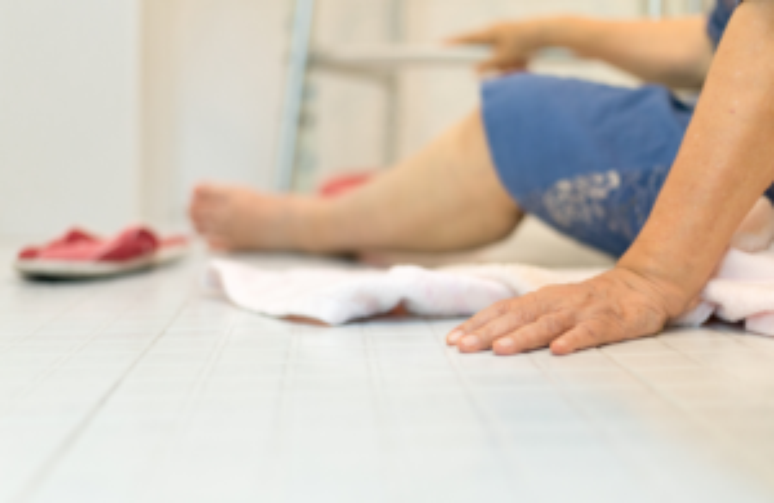Why should we be careful with hip fractures in the elderly? Bone fractures in the elderly are a major concern, and when this injury affects the hip, the consequences can be even more serious. The fractures of […]
Why should we be careful with hip fractures in the elderly?
Bone fractures in the elderly are a major concern, and when this injury affects the hip, the consequences can be even more serious. Hip fractures are a misfortune that need a thorough medical evaluation to find the best treatment. It is worth noting that an injury of this nature is linked to a set of factors that can favor this situation. For example, bone strength, intensity of trauma, frequency of falls, and pre-existing disease, such as osteoporosis, are points of concern. In this sense, the orthopedist, the hip specialist,
Doctor Marcus Aurelius*
clarifies the main doubts about hip fractures in the elderly, with the possible treatments and complications that may arise. Let’s go?
Can elderly hip fractures be cured?
Hip fractures in the elderly can be treated, but this postponement will require the analysis of some factors, as the specialist Marcus Aurelius explains: ”
Treatment will depend on the severity of the fracture, the patient’s age, general health and other underlying health conditions that may impact recovery.”
. Within the treatment options, there are several approaches that vary from patient to patient. This is why it is important to have a referral from a specialized doctor to evaluate the case and decide on the best route. Look at the alternatives!
invasive treatment
One of the possible approaches to the case of hip fractures is surgery. With an invasive procedure, in a hospital setting, hip repair can be done. Intervention options include internal fixation of plates and screws. It is also an alternative to replace the damaged hip with an artificial prosthesis, which can be partial or total.
“The type of surgery chosen will depend on the severity of the fracture and the patient’s health condition”
, says Dr. Marcus Aurelius. It must be emphasized that there are some contraindications for invasive treatments, such as surgery, such as:
- severe heart conditions;
- severe lung conditions;
- coagulopathies;
- infections;
- allergy to anesthesia or other drugs;
- mobility difficulties;
- old age.
non-invasive treatment
There are cases where surgical treatment is not indicated. In situations like this, a more conservative option may be the safe choice for patients who are older or have sensitive health conditions. Non-invasive treatments aim at pain control and early mobilization to prevent the damage from growing or causing greater discomfort for the patient.
“A conservative approach should only be used when surgery is entirely impossible, as mortality rates in the first 30 days can be 2.5 times higher”
, says the expert. For each case there is a more precise treatment indication, it is done by a health professional and helps in the recovery process. It is possible to have a combination of initiatives such as physiotherapy, occupational therapy, among others.
What are the symptoms of hip fractures?
Hip fractures can have their symptoms manifest within hours to days, depending on the degree of trauma. In this way, pain can appear in the groin area, in the outer thigh or even in the lower back of the elderly person.
“[O idoso pode ter] difficulty moving or walking, swelling, bruising and tenderness to the touch,”
explains the orthopedic surgeon. However, not all injuries manifest with this set of symptoms. Early diagnosis and implementation of effective treatment can mean a less painful and more effective recovery. Therefore, it is also possible to avoid complications of a more serious nature.
Is it possible to break a hip and have no immediate symptoms?
When a bone breaks, considerable pain is expected to occur immediately. However, there are instances where this does not happen and can compromise initial assistance.
“It’s possible to fracture your hip and have no immediate symptoms, especially in older people who may have more fragile bones and less sensation,”
says dr. Marcus Aurelius. According to an expert, this situation occurs because the pain of the fracture can be confused with muscle pain, for example. Don’t be significant to that older person. Therefore, at the slightest sign of impact or constant pain, even if not acute, it is necessary to seek medical attention to evaluate a possible injury.
html[data-range=”xlarge”] figure image img.img-86ebbf8c0c18d1a4dac984fb643f99f48pjrwoo5 { width: 774px; height: 503px; }HTML[data-range=”large”] figure image img.img-86ebbf8c0c18d1a4dac984fb643f99f48pjrwoo5 { width: 548px; height: 356px; }HTML[data-range=”small”] image figure img.img-86ebbf8c0c18d1a4dac984fb643f99f48pjrwoo5, html[data-range=”medium”] figure image img.img-86ebbf8c0c18d1a4dac984fb643f99f48pjrwoo5 { width: 564px; height: 367px; }
How is the diagnosis made?
The patient will first undergo a medical history evaluation in which possible trauma should be reported and a physical exam should be performed. In the latter, the healthcare professional checks for pain, swelling, bruising or deformity in the region. When there is a fracture, the patient may find it difficult to perform simple movements or even to bear weight on the leg in question. After this initial finding, imaging tests, such as radiography, tomography, or magnetic resonance imaging, may be indicated.
“X-rays are the most commonly used imaging test for diagnosis. [Já a] Computed tomography (CT) and/or magnetic resonance imaging (MRI) may be done if radiography does not provide enough information or if the fracture is complex”
adds Dr. Marcus Aurelius.
What are the possible complications if I choose not to treat the fracture?
Failure to treat a hip fracture can have serious consequences. The main ones are:
- chronic pain: if left untreated, a hip fracture can cause chronic pain in the groin, thigh, and hip;
- functional disability: hip fracture can limit the ability to walk and perform other physical activities;
- risk of deep vein thrombosis: immobility caused by hip fracture increases the risk of developing blood clots in the deep veins of the legs;
- infection: hip fractures increase the risk of infection;
- Death: In some cases, complications associated with hip fracture can lead to death, especially in elderly patients or those with other health conditions.
Are hip fractures in the elderly at greater risk than in the young?
This category of fractures has a higher risk for older people due to a number of factors that influence everything from treatment to recovery. The determining aspects for this assessment are focused, for example, on bone fragility and pre-existing medical conditions.
“Hip fractures can significantly affect the elderly patient’s mobility, making it more difficult to perform daily activities and increasing the risk of falls and other injuries.”
, emphasizes the doctor. Another risk compounded by hip fracture is death. In elderly patients, the mortality rate can increase significantly, being higher than the number of young people with this complication.
“[Essa realidade acontece] especially in cases of postoperative complications or in patients with other medical conditions”
, says Dr. Marcus Aurelius. Therefore, any discomfort or pain that arises in the elderly should be treated quickly. This must be done even if there is no apparent trauma. Therefore, it is important to identify the problem and resolve the symptoms of the fracture as soon as possible. Seeking specialist care can reduce the chances of a possible complication of an irreversible nature.
Is prevention important?
Before even seeking treatment, you need to prevent the trauma from happening in the first place. There are tools that can help reduce the risk of injury to older adults, such as installing grab bars around the home, especially in bathrooms. Having an active routine is one strategy to prevent trauma. That is, older people, if possible, should attend weight training, physiotherapy and hydrotherapy, for example. It is also indicated to adapt the house to the needs of that person, with ramps, non-slip mats, canes and walkers, comfortable shoes that do not slip easily, among others.
*Dr. Marco Aurelio Orthopedic graduated from the Faculty of Medical Sciences of Santa Casa de São Paulo (2007). Graduated in Medical Residency in Orthopedics and Traumatology at the Faculty of Medical Sciences of the Santa Casa de São Paulo (2011) and a postgraduate course in Hip Surgery: Hip Surgery Group of the Santa Casa de São Paulo, Department of Orthopedics and Traumatology (2012). Working in the hip surgery field since then, currently hip specialist at Clínica SO.U and Alemão Oswaldo Cruz Hospital.
Source: Terra
Ben Stock is a lifestyle journalist and author at Gossipify. He writes about topics such as health, wellness, travel, food and home decor. He provides practical advice and inspiration to improve well-being, keeps readers up to date with latest lifestyle news and trends, known for his engaging writing style, in-depth analysis and unique perspectives.








